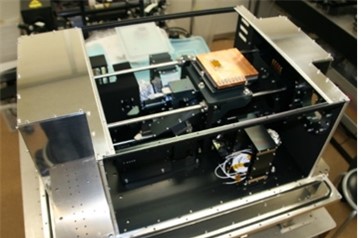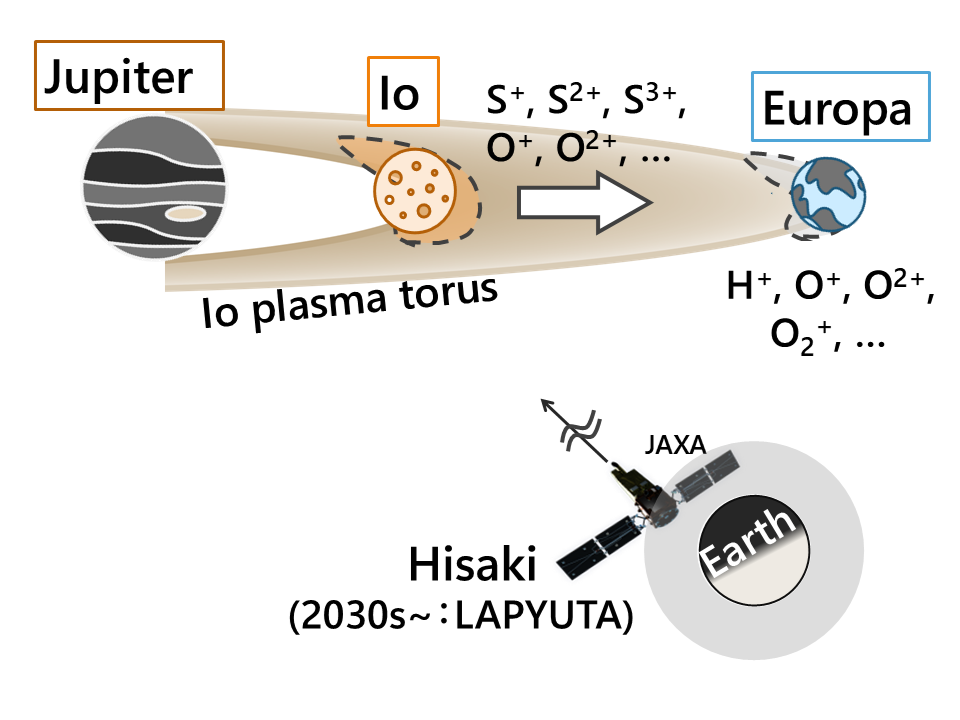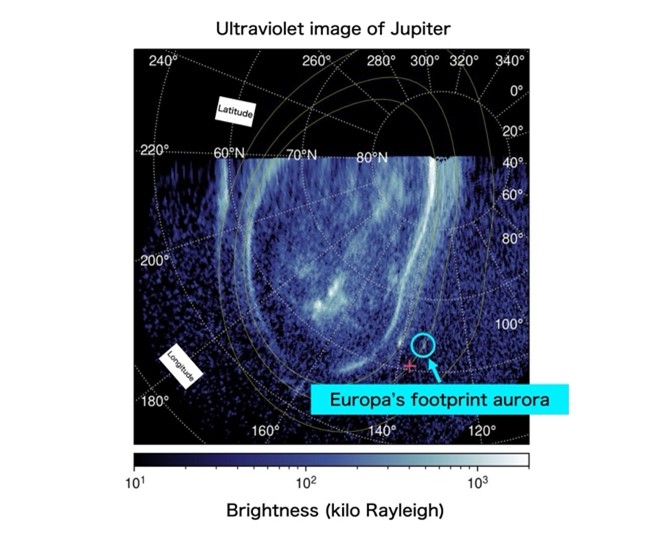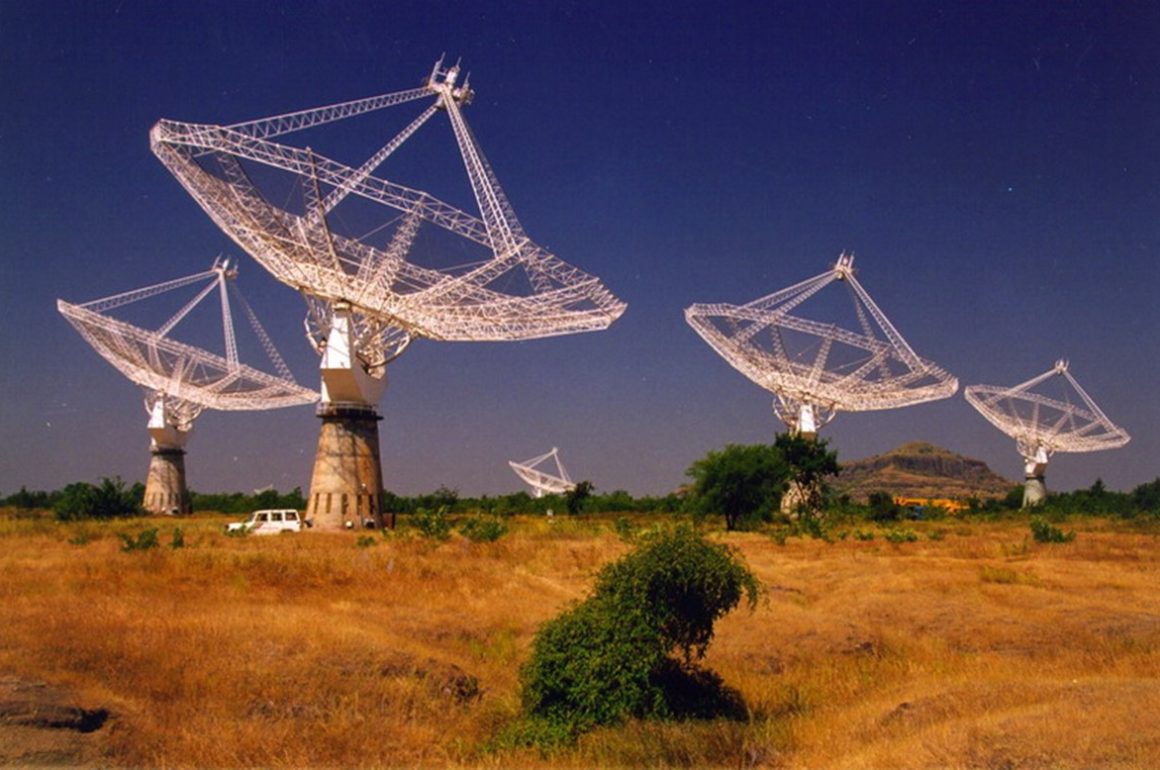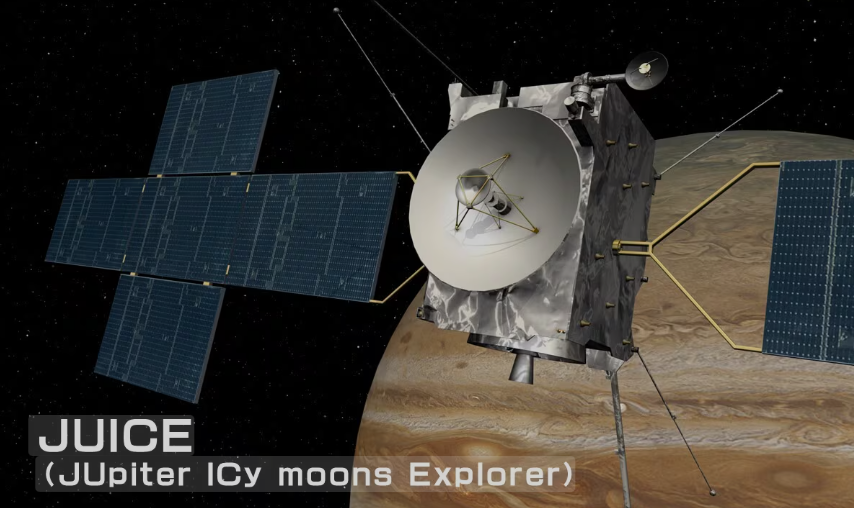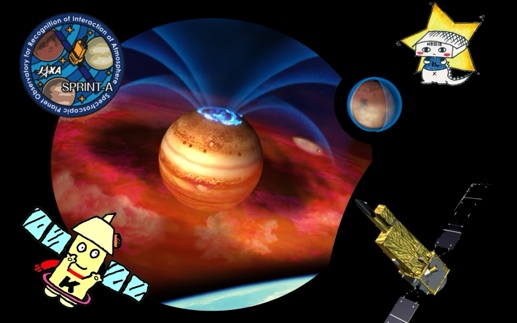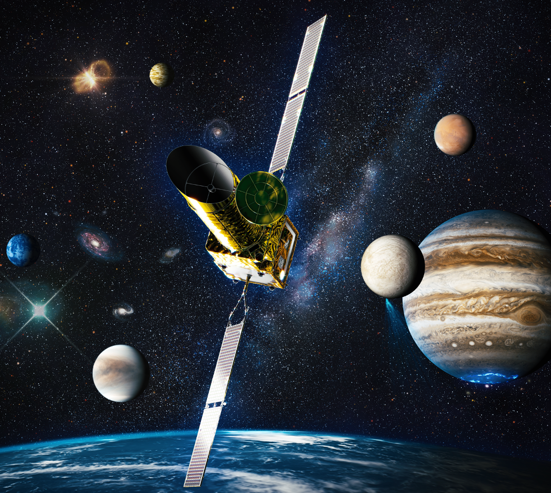Jupiter
We are developing a near-infrared camera (TOPICS) and a high-dispersion Echelle spectrograph (wavelength resolution ~20,000) for near-infrared observations installed on the Haleakala T60 telescope. These near-infrared observations will enable the observations of Jupiter’s infrared auroras and volcanic activity on Io. By combining these observations with visible observation of the T60 telescope, we aim to elucidate the material and energy transport mechanisms within the Jupiter’s magnetosphere.
In addition, this instrument apply to detect trace gas components (methane, hydrogen peroxide, HDO/H₂O) that contribute to the understanding of the physical mechanisms of the Martian atmospheric environment, including dust storms.
This ground-based observation is also significant for future collaborative observations with space probes such as the Jupiter exploration mission JUICE and the Mars exploration mission MMX. Written by SAKANOI, Takeshi
Jupiter possesses an exceptionally strong magnetic field, and within its magnetosphere lies a vast distribution of plasma released from its volcanically active moon, Io. This plasma forms a structure known as the Io plasma torus, from which narrowband kilometric radiation (nKOM) is emitted.
The objective of my research is to investigate the long-term variations in the occurrence frequency and intensity of nKOM emissions, in order to clarify their relationship with magnetospheric dynamics such as injection phenomena within Jupiter’s magnetosphere. Written by SUGAWARA Rentaro.
We focus on the volcanically active Io and the icy moon Europa. Sulfur and oxygen ions generated from Io spread to Europa’s orbit as a doughnut-shaped Io plasma torus. However, time and spatial continuity of plasma parameters at Europa’s orbit has rarely been investigated because of the limited observations. This study aims to estimate the electron density, electron temperature, and ion composition in Io plasma torus from Io’s orbit to Europa’s orbit using Hisaki satellite data. As a result, the sulfur and oxygen ion emission lines were successfully identified at Europa’s orbit. We will work on how the plasma density and ion composition at Europa’s orbit changed in response to Io’s volcanic activity occurred in late January 2015. Written by MATSUSHITA Natsuko.
Jupiter’s polar regions exhibit auroral emissions with complex structures. The “footprint aurora” associated with Europa is a signature of the plasma environment around Europa. Using the observations of the footprint aurora made by the Hubble Space Telescope, I detected temporal variations in the plasma mass density and temperature around Europa. Currently, I am continuing my research using the high spatial resolution data obtained by the Juno spacecraft. A detailed investigation of the footprint aurora will lead to a deeper understanding of the plasma environment surrounding Europa. Written by SATOH Shinnosuke.
Jupiter’s synchrotron radiation (JSR) is emitted from the high-energy electrons trapped in the Jupiter’s radiation belts. Its intensity and frequency depend on electron energy, electron number density, and magnetic field strength.
We are observing the JSR with several telescopes, including the Giant Metrewave Radio Telescope (GMRT) in India, and analyzing the data to estimate the spatial structure and energy spectrum of electrons in Jupiter’s radiation belts. Written by Waga Masamichi.
JUICE (JUpiter ICy moons Explorer) is a spacecraft developed by the European Space Agency (ESA) to explore Jupiter and its icy moons. It launched in April 2023. The main objectives of JUICE are to investigate the atmosphere and magnetosphere of the largest planet in the solar system, as well as icy moons Ganymede, Europa, and Callisto, focusing on their internal oceans, icy crusts, and potential habitability.
JUICE carries over 10 scientific instruments, one of which is the RPWI (Radio and Plasma Wave Investigation), designed to study plasma environments and electromagnetic waves around Jupiter and its moons. One of key component of RPWI, the High Frequency (HF) receiver, was developed by Tohoku University in Japan. RPWI will investigate the structure of Jupiter’s auroral radio waves, the ionosphere and subsurface structure of the satellites. JUICE is expected to arrive at Jupiter in the early 2030s and begin long-term observations that could offer new insights into the possibility of life in the outer solar system.
ISAS JUICE project
Illustration by JAXA
The Hisaki satellite is equipped with an extreme ultraviolet spectrograph and is the world’s first space telescope designed for planetary observations. By observing the time variable aspects of atmospheres of terrestrial planets such as Venus and Mars, and hot plasma in the Jovian magnetosphere, Hisaki provided opportunity to study the atmospheric evolution of terrestrial planets in the Solar System and the origin of mass and energy in Jupiter’s magnetospheric plasma. The Hisaki satellite was launched on 14 September 2013. Aft¬er more than 10 years of continuous extreme ultraviolet spectroscopic observations, the satellite was decommissioned on 8 December 2023.
The LAPYUTA mission aims “to explore the habitable environment of the Universe” and “to understand the origin of matter and space in the Universe”. From unresolved issues related to the two goals, we selected four scientific objectives to be addressed in the 2030s: (1) habitable environments of solar system bodies, (2) atmospheres of exoplanets, (3) galaxy formation, and (4) the origin of heavy elements, which will be realized by the ultraviolet space telescope. LAPYUTA was selected as one of candidates of JAXA’s M-class mission, and aims to realize a high-resolution, high-sensitivity ultraviolet telescope by optimizing the performance requirements to the science objectives.








